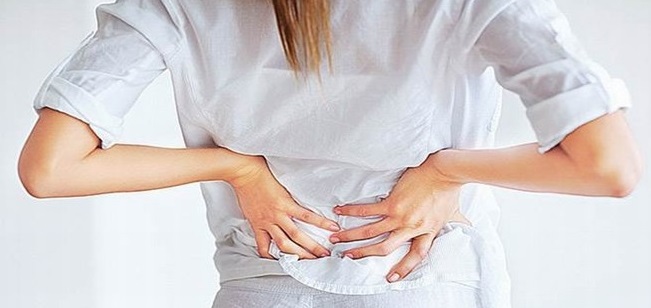
Hyperlordosis is more commonly known as “swayback”. Your lower back has a natural curve, but when you’re not diligent about posture, that curve can become exaggerated and lead to pain in the lower back.
When the muscles in the lower back are under pressure, they can pull your spine out of its proper alignment. Hyperlordosis, over time, can also cause damage to spinal discs and vertebrae.
Could hyperlordosis be causing your lower back pain? It’s entirely possible.
The causes.
Poor posture is only one of several root causes for the development of hyperlordosis. There can be more serious underlying conditions at work.
Obesity is the cause of many physical ailments, but it can also be the cause of hyperlordosis. When the abdominal muscles become weak and the load being borne by the back commensurately increases, the result can be chronic swayback.
Osteoporosis, or the depletion of bone mass (especially as we age), can lead to your body taking compensatory measures which have a deleterious effect on the overall health of the spine.
But hyperlordosis can also be provoked by underlying conditions like discitis (dysfunction in the all-important cushions between your vertebrae) and kyphosis, which causes the upper back to form a pronounced curve.
The sedentary lifestyle.
Many people eschew regular exercise nowadays. It’s a busy world and people find that they’re so busy, they don’t have time to get out of their cars and walk, or save a little time each day to care for their bodies.
We don’t move around enough and that’s the cause of much of the obesity epidemic (in concert with unhealthy eating habits). Obesity and the sedentary lifestyle are thus the number one cause of hyperlordosis.
High heels.
Those towering heels my women readers love so dearly can also provoke hyperlordosis. Of course, the aim of the high heel is to lengthen the legs, and cause the bottom to protrude, so it’s no mystery as to why they can cause swayback.
High heels are a fashion staple for many women. I’m not going to counsel giving them up entirely, but I am going to suggest that women try not to wear them for extended periods, especially if they do a lot of walking and standing over the course of a day.
A simple test.
If you’re reading this and suspect you may have hyperlordosis, there’s a simple way to check. Stand against a wall with your feet shoulder width apart and about 2 inches out from the wall. The back of your head, shoulders and hips should all touch the wall, in a natural posture. Place one of your hands behind you, in what should be a small space between the wall and your lower back.
If you find you have room for more than one hand in that space, hyperlordosis may be in play. If you’re suffering from lower back pain and your “wall space” is excessive, it may be time to come in and consult with me. As stated above, hyperlordosis may be caused by serious, underlying problems.















